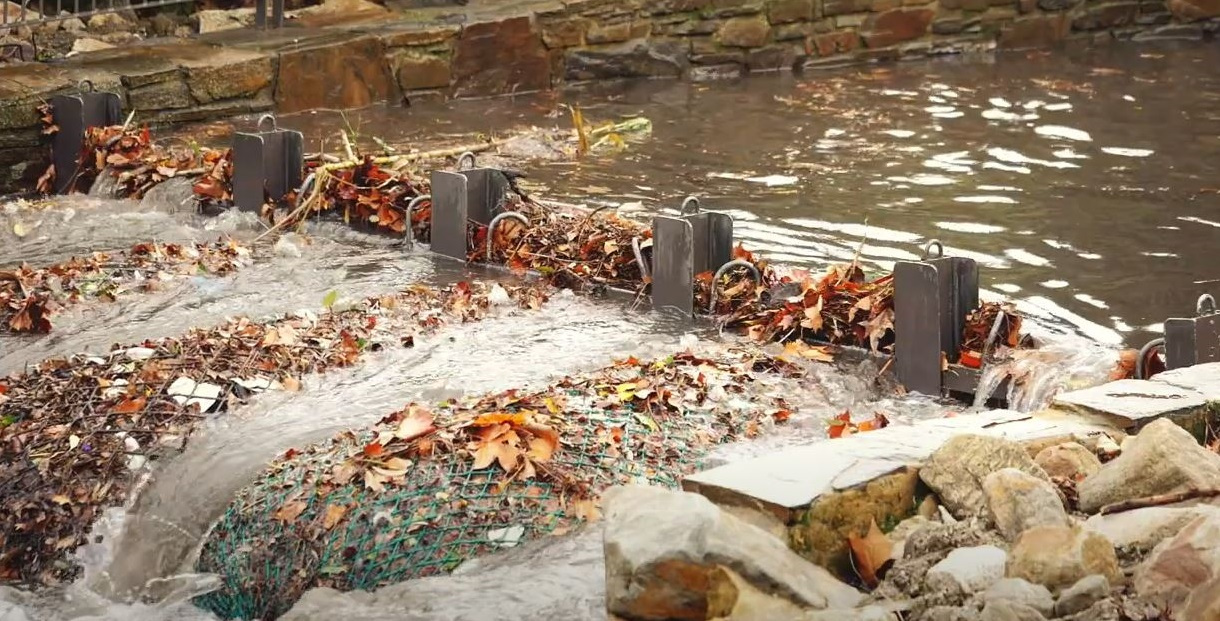Removing trash from Adelaide's rivers
Reducing the amount of rubbish in Adelaide’s waterways is a key part of keeping them healthy. Here's how we play our part.
Any water that falls from the sky – such as rain, hail or melting snow – and onto a hard surface, where it can’t soak straight into the ground, is known as stormwater.
Where water is able to soak into the ground, it is naturally filtered and travels underground until it reaches a body of water, such as a stream or river.
Sometimes soil becomes saturated – too full of water – and what’s left unable to soak in also drains away.
Unfortunately, stormwater picks up all kinds of things on its journey – from leaves and dog poo to detergents and rubbish – as it travels towards our creeks, rivers, lakes and out to sea. This includes eroded dirt that may contain nutrients that can ruin the balance of the river and pesticides.
Because of this, stormwater can have a big impact on both freshwater and marine environments.
In urban areas, where there are lots of pavements, buildings, driveways and roads, rain is blocked from soaking into the ground. As more development occurs, the natural patterns of rainwater runoff continue to be changed.
The growth of our city – and all cities across Australia – places more and more pressure on our waterways, with increased pollutants finding their way into them. Plastic, heavy metals and excess organic matter, just to name a few things, can impact the available food and homes for our native plants and animals.
Managing runoff from rain to control both the quantity and quality of water reaching our waterways, is known as stormwater management.
Stormwater management involves managing both the quality and quantity of rainwater runoff, which can mean filtering it and finding ways to avoid localised flooding. Ways to do this include using vegetation in infrastructure, so that water soaks in instead of floating away, and designing features that will capture stormwater.
Filtering stormwater so that it can be reused can also reduce pressure on our imported water supply – from reservoirs – helping us keep our streets greener and even irrigate our ovals and other sporting fields.
As we head towards a drier and warmer future in Adelaide, better stormwater use is one of the most practical ways we can make our city cooler and greener.
Green Adelaide supports stormwater management through a range of methods. One way is by working with local councils to remove trash from our waterways using a combination of assets. Local councils may also own and manage their own assets.

Also known as ‘gross pollutant traps’ or GPTs, these structures have nets that trap rubbish build-up for disposal out of the system.
Across metropolitan Adelaide we have 18 trash racks, with a number of these on the River Torrens / Karrawirra Pari and connected waterways.
Green Adelaide has 5 floating booms installed over waterways across Adelaide.
If you imagine a bendy boom gate suspended on water, that should give you a pretty good idea of what a floating boom looks like.
These trap pollutants on the surface of the water.
Sediment basins, which are a bit like a pond, used to slow water and temporarily hold it, to trap and then store sediment – like silt – and loose materials, such as leaves and twigs. This type of asset is used to collect coarse and medium size sediment from runoff.
Sediment basins catch stormwater before it reaches our waterways, helping filter and clean it by slowing the water, allowing the sediment to settle at the bottom of the basin.
Green Adelaide owns, manages and operates 3 sediment basins, but there are also others across Adelaide that belong to councils and even private developers, where they have been installed in housing developments to help manage stormwater runoff.
There is a comprehensive cleaning program in place for gross pollutant traps along the River Torrens / Karrawirra Pari and waterways that feed into the river.
Our trash racks, floating booms and sediment basins are visited at least once every 3 weeks – and more often when there is higher rainfall.
If there's rubbish in your local waterway, contact the relevant council or the Environment Protection Authority (EPA).